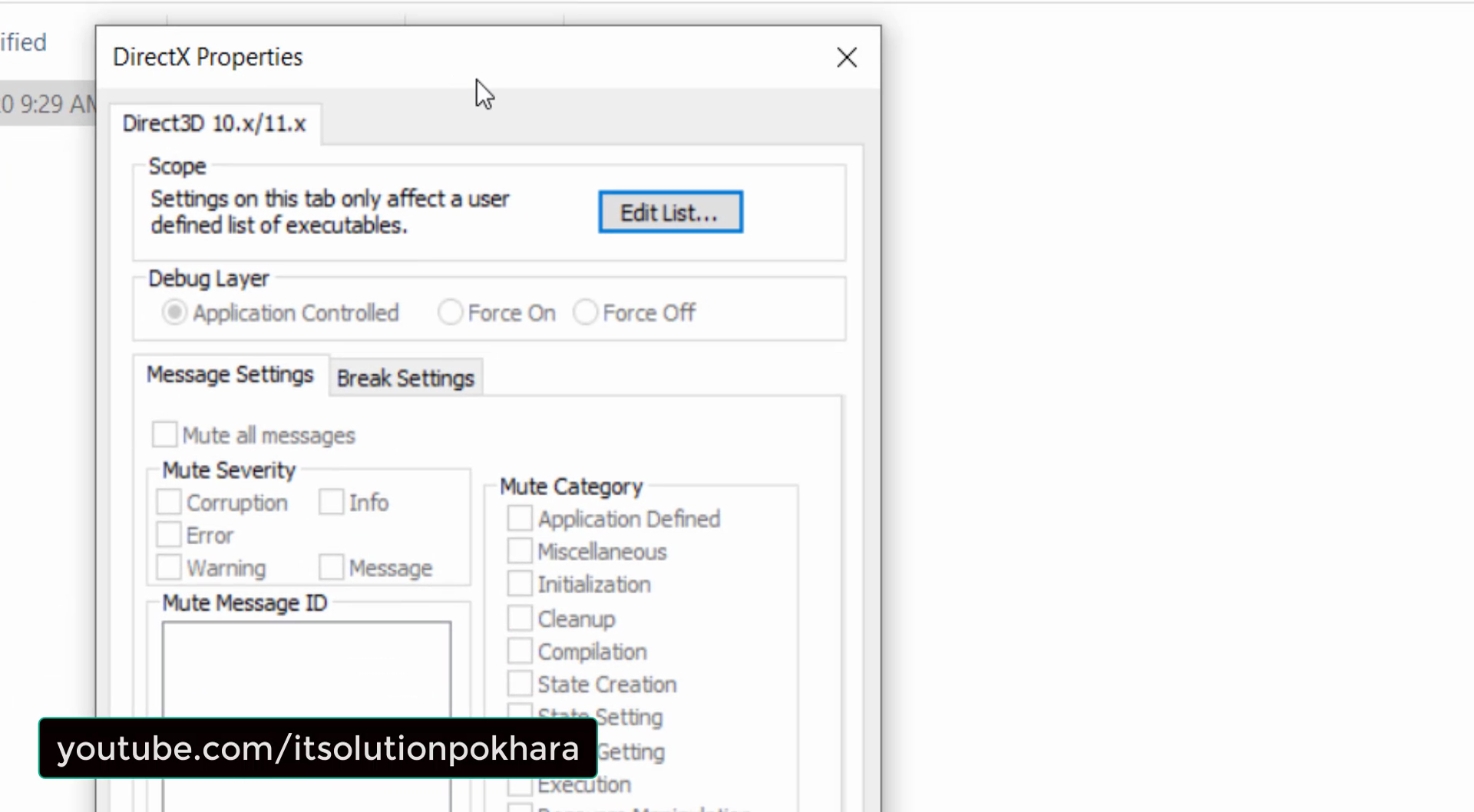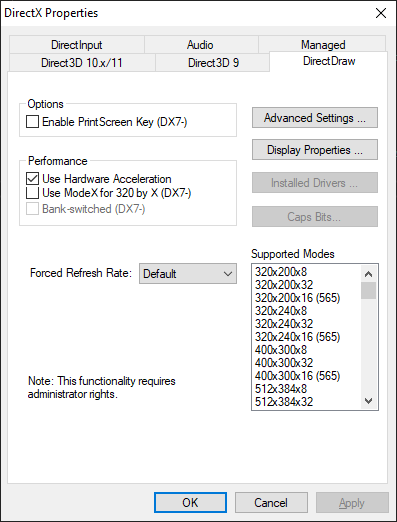

- #No dxcpl exe file how to
- #No dxcpl exe file driver
- #No dxcpl exe file full
- #No dxcpl exe file windows 10
- #No dxcpl exe file download

There is a special case that, the operating system is a 64-bit system, but you are not sure whether the program is 32-bit or 64-bit.
#No dxcpl exe file download
If your operating system is 32-bit, you must download 32-bit files, because 64-bit programs are unable to run in the 32-bit operating system. (Method: Click your original file, and then click on the right key to select "Properties" from the pop-up menu, you can see the version number of the files) If your original file is just corrupted but not lost, then please check the version number of your files. If you know MD5 value of the required files, it is the best approach to make choice
#No dxcpl exe file how to
Tip: How to correctly select the file you need
#No dxcpl exe file full
Of course, the –help option provides a full list of available options. > d3dconfig message-break -add-id-12 722ħ22: D3D12_MESSAGE_ID_CREATERESOURCE_INVALIDMIPLEVELS In order to remain compatible with the DX Control Panel, this is a two-step process: > d3dconfig message-break allow-debug-breaks=true > d3dconfig debug-layer debug-layer-mode=force-onīreak-on debug messages can also be controlled using D3DConfig. One of the most common tasks done in DXCpl is to force the debug layer on. To register an app: > d3dconfig apps -add MyBuggyGame.exeĪpps can also be registered using directory scope (yes, the terminating ‘\’ character is needed): > d3dconfig apps -add g:\bin\games\ To list the currently registered apps, run: > d3dconfig apps Like DXCpl, only registered apps are affected by the D3DConfig settings. For example, DRED settings are only available in D3DConfig. This means that new settings are likely to be exposed only in the D3DConfig tool. At this time we have no plans to expand the DXCpl user interface. Similarly, the DXCpl reflects most D3DConfig settings. You can still use the DirectX Control Panel if you like.
#No dxcpl exe file windows 10
Graphics Tools can be installed by using Windows 10 “Manage Optional Features” settings, or by running the following command: > DISM /online /add-capability /capabilityname:~~~~0.0.1.0 If you have been holding off installing Graphics Tools until you could change D3D settings from the command line, then your time has come. If you already have Graphics Tools installed (you do if you are using D3D debug layers), then updating to 20H1 will automatically add D3DConfig to your system.

D3DConfig.exe is part of the Graphics Tools Feature-on-Demand and is available in the “20H1” Windows 10 Insider Preview (currently build 18970 in fast-ring). The D3DConfig tool can display and modify the DXCpl settings from the comfort of your very own console window or batch script. Introducing D3DConfig.exe in, a console app compatible with DXCpl.

In addition, the UI-based DXCpl doesn’t integrate into automation scripts, nor is it useful on scaled-down Windows platforms that do not support Win32-based user interfaces.
#No dxcpl exe file driver
But what started as a simple utility for controlling D3D debug output and driver type selection has struggled to keep up with modern DX12 debugging options. The DirectX Control Panel (DXCpl.exe) has dutifully given developers the ability to configure Direct3D debug settings for nearly two decades.


 0 kommentar(er)
0 kommentar(er)
